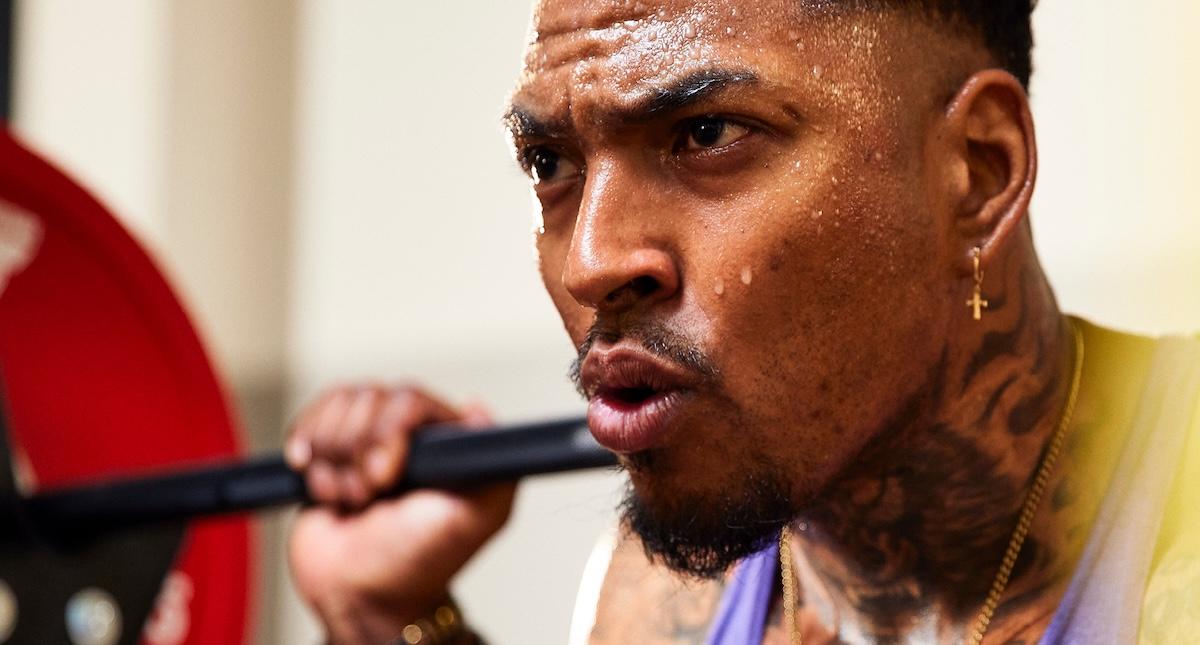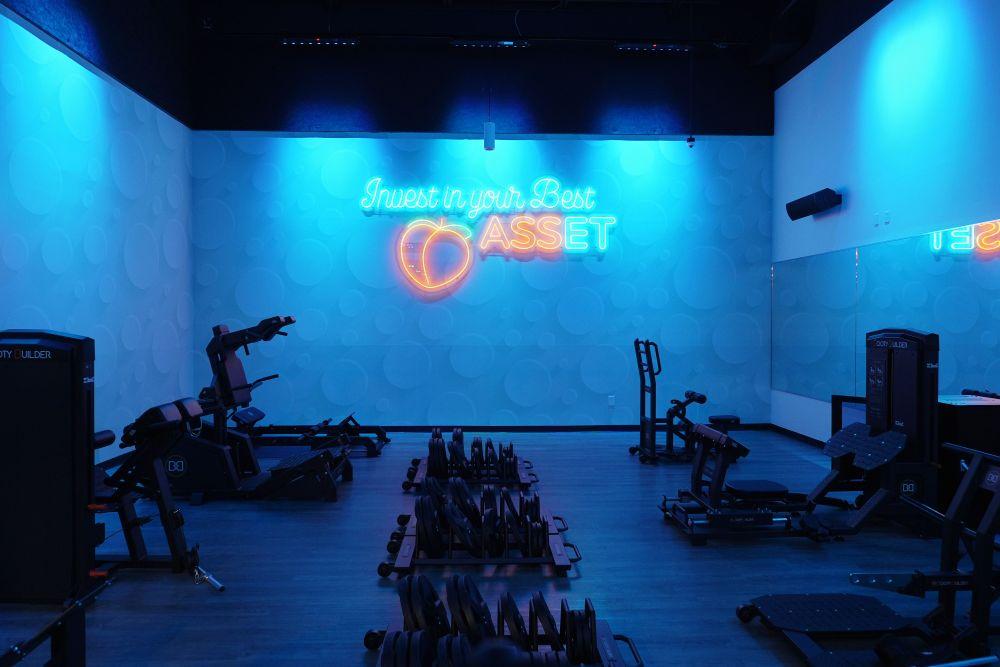Powerlifting Training for Beginners
Personal Training
Jan 21, 2021 • 8min read
Perhaps you’ve walked into a gym, watched a muscle-bound dude lift a stupendously heavy barbell from the ground, and thought, that was beautiful. That was powerlifting. If you want to become strong enough to be favorably compared to an ox as well as improve your mental fortitude and discipline, powerlifting may be a fitness hobby worth considering. Powerlifting is challenging but also richly rewarding, and anyone in relatively good health can do it.
Here’s what you need to know about powerlifting for beginners.
What Is Powerlifting?
Powerlifting is both a niche sport and, at least to its most devout adherents, a lifestyle. It revolves around “The Big Three” lifts:
- Bench press
- Back squat
- Deadlift
The goal of a powerlifter is to perform each of those movements at the heaviest weight possible. In this way, powerlifting is beautiful in its simplicity. The name of the game is raw strength, and success is easy to measure. You either make the lift or you don’t.
Dig a little deeper into powerlifting, however, and you’ll realize just how complex and layered the sport can be. Sean Collins, a powerlifting coach, explains in an article for Men’s Journal that, “There’s so much to learn: bracing, rooting, breathing, optimal foot position, bar position, eye gaze, head position, activation… It’s rewarding to go through the journey of getting strong because you learn so much about your body and so much about yourself.”
Learning any of the three lifts is simple. Getting good at them requires patience, dedication, and an ample supply of mental fortitude.
What Are the Benefits of Powerlifting?
Are you interested in trying a beginner powerlifting routine? The primary benefit of powerlifting training is obvious—raw, unfiltered strength. The more you work on powerlifting, the stronger you’ll become. If you want to carry all the grocery bags into the house in one trip, give your kids endless piggyback rides, or be able to push your car to the mechanic if it ever stalls out, powerlifting might be the right hobby for you.
The benefits don’t end there. Powerlifting is also a form of physical meditation. A powerlifter must learn self-discipline and sacrifice. Improvement comes easy in the beginning, but once established, experienced powerlifters must work incredibly hard for each additional pound they add to their lifts. That requires a high degree of mental toughness and commitment.
Finally, don’t assume that powerlifters are all young stallions with something to prove. Powerlifting is a sport anyone can excel at regardless of age, gender, background, or ability. In fact, many of the best powerlifters are in their 30s and 40s. The sport rewards lifters who have the patience and diligence to put in the work, a personality profile that often favors older lifters. Powerlifting competitors compete in weight categories, so smaller lifters have just as good of a chance to win the day as larger lifters.
What Are the Drawbacks of Powerlifting?
Powerlifting is certainly not for everyone. Like many sports, it is highly specialized. You won’t improve your cardio through strict powerlifting training, for example. If overall fitness improvement is your goal, powerlifting can be a component of your training but shouldn’t be your exclusive focus.
Additionally, if you want to look like the muscled gods and goddesses that flex on stage at a Mr. Olympia competition, you’ve got the wrong sport. Powerlifting is all about building raw strength, while bodybuilding focuses on developing that muscled physique that The Arnold made famous in the ‘70s.
Finally, if you are interested in being a competitive powerlifter some day, you’ll need to have the time, energy, and focus to dedicate to intense training, as you would with any other sport. Improvement comes quickly in the beginning, but as powerlifting coach Collins points out, “The road to 90% is relatively easy. The road from 90 to 100 is hard as [heck].”
Powerlifting Equipment for Beginners
Want to give powerlifting a try? The first thing you’ll need is a gym membership. Make sure you pick a gym that offers plenty of lifting racks, barbells, and weights. Ask if your gym has a formal or informal powerlifting club you can join.
Next, it’s a good idea for powerlifting beginners to pair up with an experienced partner. If you have the funds, consider hiring a powerlifting coach or trainer or taking a powerlifting class. A movement like the deadlift may seem simple to the untrained eye, but each of the main three lifts is highly technical.
It’s crucial that you learn the right technique for each lift and build a solid foundation that will help you reach your full lifting potential.
As you improve in your lifting, you may want to invest in additional equipment. Some of the most popular powerlifting equipment is:
- Lifting shoes – Give you a raised heel to provide a more stable base for squats and deadlifts
- Weight belt – It works as a reminder for you to stabilize your core and protect your lower back during heavy lifts
- Knee sleeves and elbow sleeves – Help protect your joints and give you a little lifting boost
- Barbell wraps – A good training tool for deadlifts that can help you pull more weight off the ground
- Chalk – No one wants to lift with sweaty hands.
A Step-by-Step Guide to Powerlifting for Beginners
Step 1 – Focus on Form, Form, Form
It is impossible to overstate how important it is that new powerlifters take the time to learn the correct form for all their lifts. It may be tempting to immediately start throwing a lot of weight on the bar, but if your technique is poor, it will dramatically hinder your progress. Additionally, if your knees cave on your back squat or your back collapses on your deadlift, you could be heading toward a major injury.
Step 2 – Develop Your RPE
RPE stands for Rate of Perceived Exertion. After you’ve mastered your technique for the big three lifts, gradually add weight and determine how each lift feels. You’ll want to start understanding what weight represents 70% of your perceived exertion, 80% of your perceived exertion, and 90% of your perceived exertion. You can use those numbers to begin developing a powerlifting workout plan with your coach or lifting partner.
For example, your coach may program a traditional 5×5 at 70% RPE. That means five sets of five reps each of the weight that represents your 70% rate of perceived exertion.
Step 3 – Build Your Weight Slowly
Take your time in building up the weight you use during your powerlifting workouts. Starting with light weights will give you time to perfect your form and get your body used to the rigors of weight training. Make jumps gradually. On the deadlift and back squat, you may want to increase your training by 10 pounds per week until that becomes uncomfortable and your bench press by five pounds per week until you start hitting a sticking point.
Step 4 – Work on Mobility
What do powerlifters and yoga instructors have in common? They both need to be highly flexible. Powerlifters need flexible shoulders, hips, knees, and ankles. Flexible hamstrings and quads can also help you get lower in your squat.
Take the time to perform a dynamic warmup before each lifting session and consider adding some foam rolling and static stretching after your workout to improve your mobility.
Step 5 – Cross Train
You may assume that powerlifting requires only strong glutes, hamstrings, quads, and pectorals. Not true. Your body is filled with ancillary muscles that can help you improve your lifts. For example, a strong core is paramount for all the lifts. Strong shoulders can power your bench press and help stabilize the bar during your back squat.
Ideally, you’ll only want to perform powerlifting workouts two to three times a week. On your off days, work your ancillary muscles. It’s also a good idea to add in light cardio, like swimming or biking, to maintain your cardiovascular health.
Step 6 – Find Your One Rep Max
Using the RPE is a great tool for beginning powerlifters, but as you gain experience, you’ll want a more accurate metric to help you develop your powerlifting training. It’s time to find your one-rep max on the big three lifts. Give yourself plenty of time, and make sure a workout partner is available to spot you. Work your way up in weight until either your form breaks down or you miss a rep. The heaviest weight you are able to lift is your one-rep max for that lift. You can now use that number in place of your RPE to develop your powerlifting workout plan.
Step 7 – Dial in Your Nutrition
What powers that barbell when you perform any of your lifts? Muscle, of course. Make sure you are eating a diet with plenty of protein. Your body also needs lots of nutrients to repair itself after a tough lifting day. The more amino acids, vitamins, and minerals you give your body, the better your results will be. If you’ve heard the phrase “garbage in, garbage out,” the opposite is also true when it comes to nutrition and lifting.
Step 8 – Sign Up for a Competition
There’s nothing more motivating than a competition to get you in the gym and help you slog it out through a long and painful lifting session. If you really want to see the results of your effort, sign up for a powerlifting competition. (Here’s a list of 2021 powerlifting competitions in the US.) Yes, it may feel nerve-wracking the first time you compete, but many competitors enjoy the adrenaline rush of facing off against the barbell as well as the camaraderie they find in the company of their fellow lifters. If you want a lower-pressure experience, consider putting on an informal competition with your gym buddies. Mark a day and work to find your new one-rep max in all your lifts.
What Is Your New Year’s Resolution?
If your New Year’s resolution is to get strong, it’s time to look into powerlifting. Talk to the trainers at your gym. It’s likely that many of them will be familiar with powerlifting. Some might even be powerlifters themselves. Hiring a trainer can get you started on the right path. Your trainer will ensure that you have good form on your lifts and can develop a beginner powerlifting routine for you.
Happy lifting.




